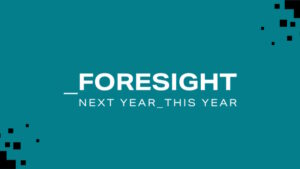By David Courtier-Dutton, CEO, SoundOut
The fast-emerging world of sonic branding is at a pivotal point.
To date it has largely been serviced by music creators and production agencies who have, over time, become well-versed in the language of branding and have learnt to apply strategic branding approaches to building a brief to create a sonic brand.
Such briefs are then handed off to composers to be subjectively interpreted then expressed in sonic form. Everyone has a listen and, through a largely subjective process, collectively agree that they have nailed it. Then off to a bar for cocktails and medals.
However, as sound is increasingly regarded as a core brand asset – up there with the visual identity (logo) and strapline – agencies are increasingly attracting new big brand clients who are happy to drop $500k or more on the creation of a new sonic identity. Such clients are acutely strategic in the brand equity space and are used to working with measurement benchmarks, leading to a greater level of demand for proof of ROI on their sonic brand investment.
Over the past few years we have seen an increasing volume of demand from brands requiring a consumer insight element to their sonic branding projects. That led us to launch our new study, the SoundOut Index, covering over 150 major sonic logos/mnemonics/signatures currently in usage across the US and UK. We took insights from over 30,000 consumers hosted on our 3.5 million-strong consumer testing platform.
We used our proprietary technologies to measure each logo against a range of metrics and grouped these into 3 key measures:
- The intrinsic effectiveness of each logo – i.e. how good is it as a standalone musical asset (without brand association)
- The strength of personality that the logo communicated (i.e. its ability to land core brand attributes)
- The market penetration of the logo – or how well has the brand achieved recognition, and most importantly brand attribution with their logo.
We discovered that Just Eat has the UK’s favourite sonic logo, followed by AO.com (#2), GoCompare (#3), Moonpig (#4) and Pearl & Dean (#5). Conversely, the US’s favourites were dominated by movie brands – led by Disney and followed by 20th Century Fox (#2), Goldfish (#3), Warner Brothers (#4), and Farmers (#5).
But we also found some other common themes and distinct differences in how sonic branding is executed, and lands, with consumers in the US and in the UK.
Across the board ‘appeal’ is really important. As with all music, people must like your sonic identity. The more they like it, the easier it is for them to recall it. If they can recall it, they will more easily recognise it. If they recognise it, they are one small step away from attributing it to your brand. If you achieve attribution, then the logo has hit the jackpot, releasing a flood of emotional brand association every time a consumer hears it.
How do you stand out from the crowd? Distinctiveness is oft regarded as a base necessity in branding, and yet in music branding the data says otherwise. Distinctiveness appears to have little or no role in driving recall, which is the first essential step towards attribution. In the US, the key attributes that drive recall are ‘uncomplicated’, ‘friendly’ and ‘family orientated’. In the UK they are ‘catchy’, ‘welcoming’ and ‘youthful’.
In other words, US consumers like simple, friendly and homely sonic logos, while in the UK it is the poppy, happy, youthful sounds that are best at driving recall. Distinctiveness is ranked at a lowly 163 in the UK and 184 in the US (out of over 200 attributes) in its ability to drive recall.
You would think that sonic logos that include the brand name would be more memorable and easier to attribute. And you’d be correct – not a searingly acute insight, but yes, logos that contain the brand name are twice as effective at securing attribution (69%) than those that don’t. Perhaps a more interesting perspective is to wonder why 31% of consumers still fail to correctly attribute the brand when the brand name is being shouted in their ear.
What is most fascinating is that an analysis of the leading sonic logos in The SoundOut Index reveals which Jungian archetypes tend to have the greatest impact on consumers in the US and the UK. In the US, 60% of the top 10 performing sonic logos include a ‘companion’ archetype. Meanwhile, in the UK, 90% contain a ‘Jester’ archetype. Once again, we see how the US resonates with ‘friendly’ logos while the UK is more stimulated by ‘poppy’, ‘youthful’ sounds.
Historically more of an art than a science, sonic branding is now coming of age. Brands and agencies can now understand how the emotional power of sound can be harnessed to capture and influence consumer behaviour. In doing so, they will add a uniquely powerful new capability to their marketing arsenal.









